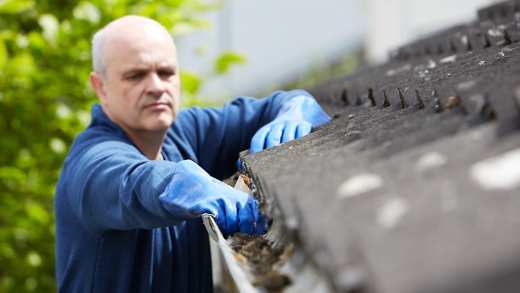Five ways to winter-proof your property
We know it’s important to make sure our homes are ‘winter-ready’.

By getting your property winter ready sooner rather than later, not only can you help reduce the risk of problems but potentially save money too. Here’s how to prepare your home for winter.
1. Inspect your roof
Let’s start by talking about your roof. It only takes one loose, cracked or broken tile to allow for water ingress (when water gets into your home) in heavy rain, or for any melting snow to penetrate vulnerable areas.
If you have a flat roof, then depending on how recently it was installed, the bitumen covering could blister, crack and lose its integrity – particularly over the hot summer months. The layers of protective membrane can degenerate over time, creating an opportunity for water to find its way in.
If you suspect any areas of your roof need attention, have it professionally inspected to identify and rectify any issues found before they become a major – and more expensive – problem later on. Many insurance policies only accept a claim for weather damage if the property was in reasonable condition at the time the incident occurred.
If you get a builder to work on your roof, make sure they offer a warranty on their work and the materials they use, which is independent and in addition to the company’s own written guarantee. Most reputable and professional firms will offer this, but it’s best to check.
2. Clear gutters and downpipes
Gutters and downpipes are also a common cause of water ingress issues, yet are often overlooked. Blockages from leaves and plants are both major contributors to overflowing guttering and downpipes during heavy rain and storms.
Left unchecked, obstructed pipes can allow water to flow into the soffits, eaves and fascia around your home. Not to mention creating seepage through any cracks in your pointing or masonry. Keeping them regularly cleared of debris throughout the winter months can significantly help to prevent any deluge.
Many professional property maintenance companies recommend checking and clearing gutters at least twice throughout the winter. Once directly after autumn when leaf-fall is most evident, and once in late January to ensure that you’ve removed any other debris collected as a result of wind and heavy weather.
It’s easy to keep on top of any gullies at ground level, but unclogging guttering at height is probably a job for professionals.
If you suffer from water ingress, your insurance claim may be rejected if it’s decided that the issue was caused by a blockage caused by a lack of basic maintenance.
3. Eliminate trip hazards
While you're outside, check for trip hazards. Common problem areas are driveways, garden paths, patios and decking. During the colder months, it’s not very easy to spot loose paving slabs or slippery decking that may cause a tumble, particularly if covered with ice or snow.
4. Check the central heating
Around October many people turn their central heating back on. However, if your boiler is a little older and hasn’t been used much all summer, the sudden pressure on the system to heat radiators regularly can create issues, resulting in failure.
Arrange your annual boiler service and safety check in October so you have time for any repairs before winter sets in.
Find a local Gas Safe engineer via the national register.
5. Insulate water pipes
Check your water supply pipes and insulate them where necessary. When the temperature drops, water can freeze inside the pipes, then expand and create pressure, causing the pipes to burst and flood your home.
You can avoid this by making sure that any water supply pipes around your property exposed either to exterior walls or unheated spaces are insulated. Well-insulated pipes can make your home more energy-efficient, potentially saving money on your bills, as well as reducing the risk of any water-related issues.
Key areas of pipework to check are in your loft or outside. If you have a hot water tank, check that both the tank and lagging pipes are well insulated as well as any gaps where pipes penetrate the walls.
If you're not confident about checking pipes yourself, you can take professional advice from a qualified plumber. Aside from personal recommendations, it might be helpful to check WaterSafe, a free online directory, funded by the water industry, to help consumers find qualified plumbers in England, Scotland, Wales and Northern Ireland via their online register.



